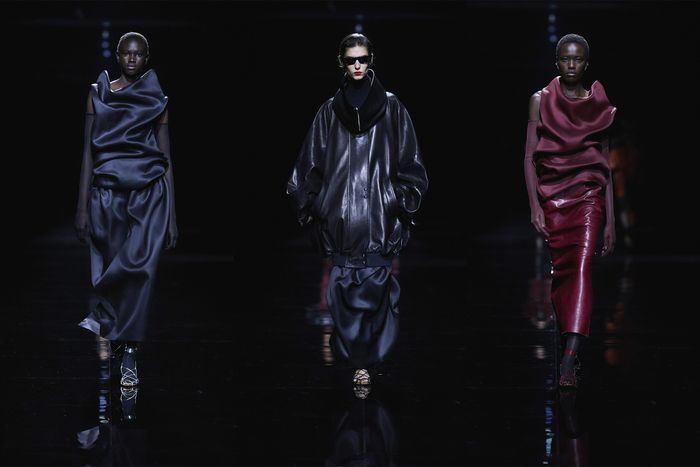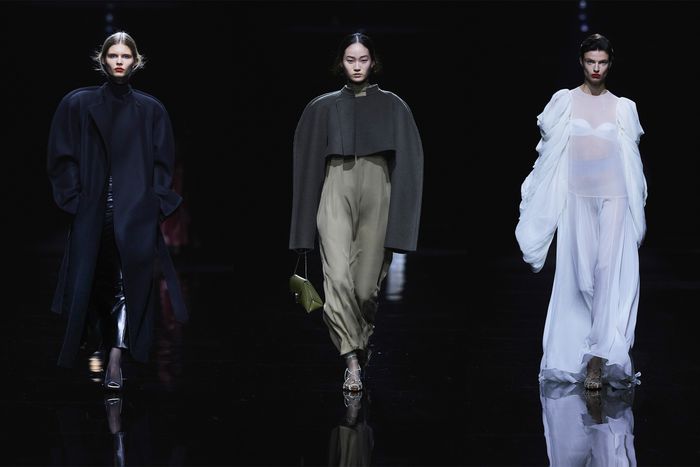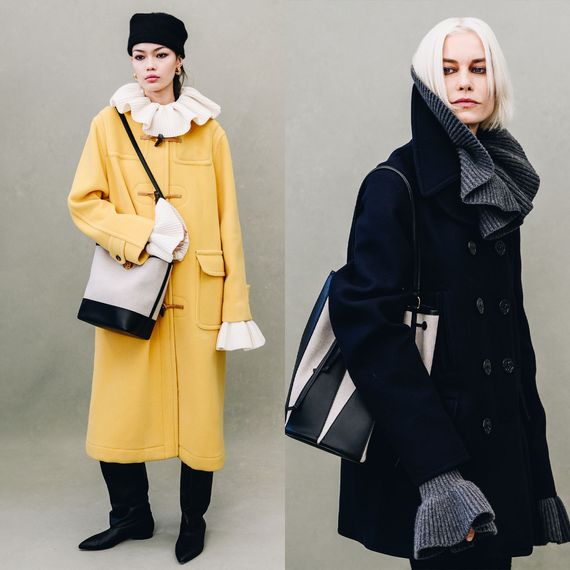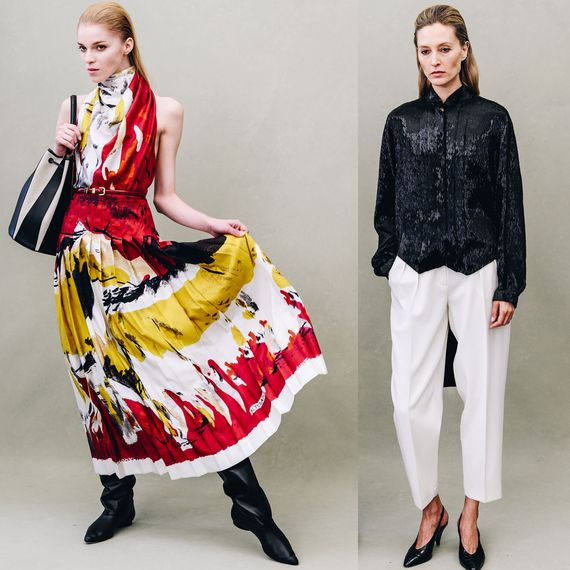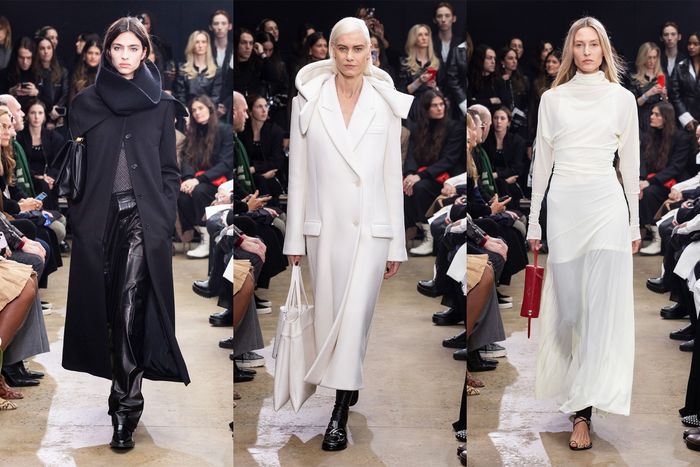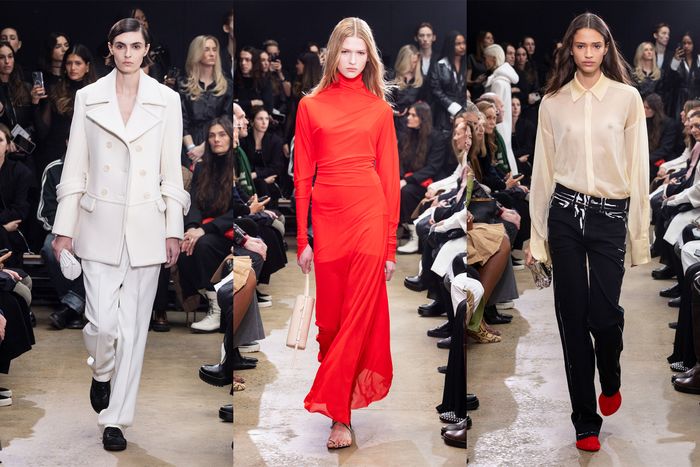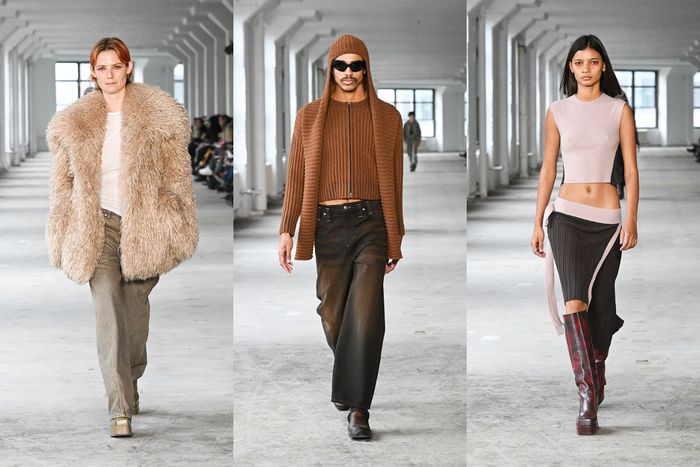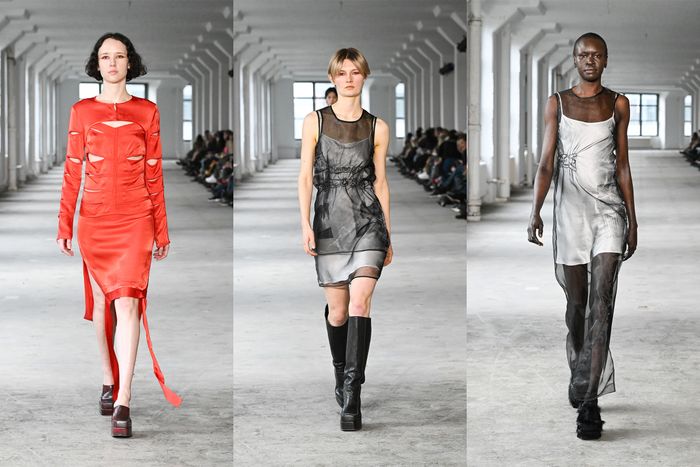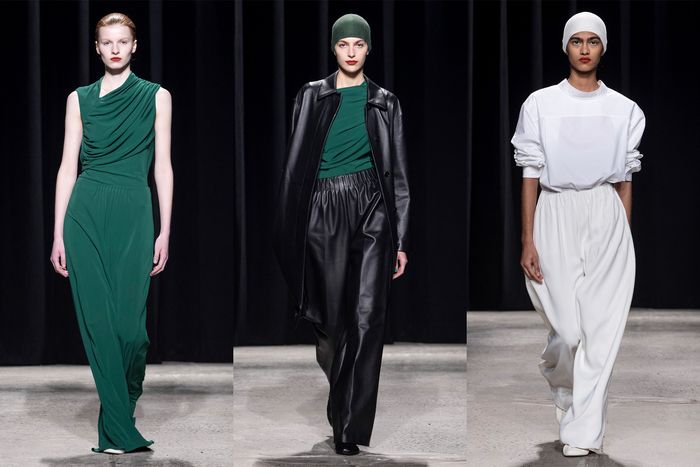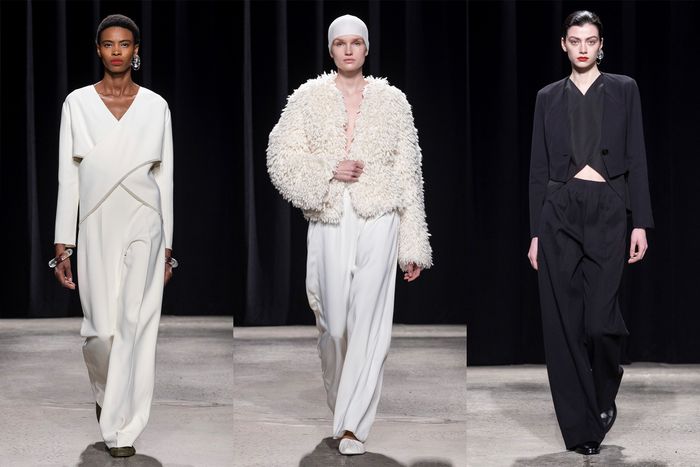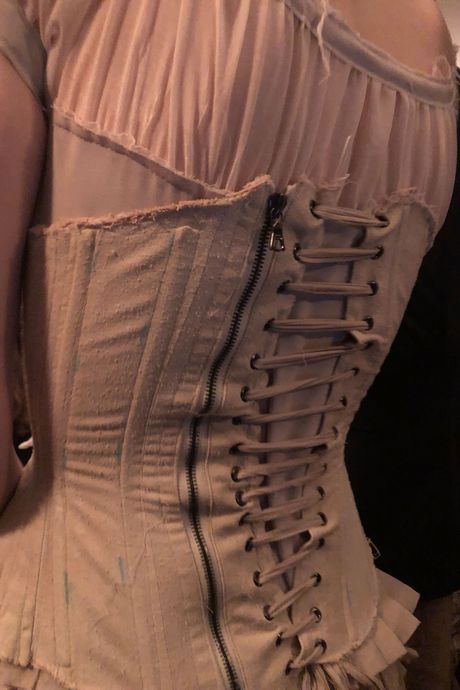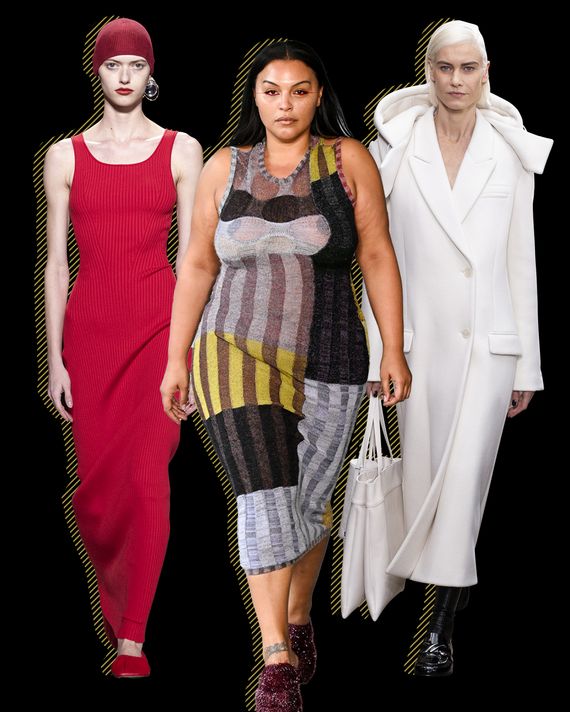
“To be honest, I now mostly flip through images … nothing grabs me. Or very little. Because very little is an enhancement of life — and I want a little fun also.” A friend wrote this in a text over the weekend, accompanied by some photos of early spring flowers in Slovenia, where he lives. He is an art curator and one of the most astute observers of fashion I know — on its art, politics, glamour, and feminism. We met years ago, when I started the On the Runway blog at the New York Times and he joined the discussion. Once again, he has put his finger on the problem.
Despite the immense reach of brands and fashion’s greater role in popular culture — most recently through shows like The New Look and Feud: Capote vs. the Swans and the forthcoming John Galliano documentary — very little grabs us. Partly it’s the sheer number of images competing for attention, partly it’s the lack of truly original talent, and partly it’s the realities of a fashion show and the commercial constraints of the industry itself. Still, my friend’s choice of words is quite correct: People are looking for things that are “an enhancement of life” — in their homes, in their travel, in their reading and movie-watching, and in their sense of beauty.
And I think it’s behind the yearning that I sense among designers, whether to do realism without the banality of “quiet luxury” or to break out of the show system entirely, as the young designer Elena Velez attempted to do last night — and mostly succeeded — with a dress-up party in a Fifth Avenue mansion based on a famous French literary salon of the 1700s followed by a discussion of Margaret Mitchell and her heroine, Scarlet O’Hara. And that yearning also accounts for the tremendous response to Galliano’s haute couture show last month for Maison Margiela, which keeps revealing new dimensions about itself — like the fact that its dandyism is equally soaked in Spain.
Let’s start with one of the most hyped shows of NYFW: Khaite, by Catherine Holstein, the recent winner of the CFDA Womenswear Designer of the Year award. Despite, or perhaps because of, the abundance of dressy fabrics (leather, gazar, organza) and couture techniques like draping, the results felt as cold as charity. Plus, Holstein brought her audience to a vast room at the Chelsea Piers, its vastness (and emptiness) heightened by the fact that models paraded around the square perimeter and the rest of the area was a big shiny black hole set in low lounge light. The days — hah! — are long past when this kind of heavy drama works. People want intimacy, warmth, and contact.
Holstein’s press notes said she was inspired by the idea of “heritage from memory” — specifically, her memories of her mother and the transitions in style and taste of generations. That’s a worthy notion. She also wanted to explore “the dilapidation of a fallen drape quite literally.” Hence the rather lumpily draped tops and dresses in organza. My beef with Holstein’s work, as in previous seasons, is that she doesn’t get the fundamentals, like proportion and fit. Instead, everything is pushed, pulled, or pumped up — but without clear intention and finesse. Marc Jacobs can also pump things up, for example, but the difference is you don’t doubt his purpose or skill.
As it happens, the weekend shows were generally good with the best being Joseph Altuzarra’s. Now in his 15th year in business, Altuzarra had the uncomplicated idea of showing roughly 40 unique outfits, linked only by a few common genres, such as riding clothes, shapes inspired by ballet, and the frilled harlequin collar. As he pointed out, “Women don’t have merchandised closets.” Many have garments they’ve held onto for years and then will bring a style out, mixing it with something new.
Well, Altuzarra showed you how to do that and without beating a dead horse. What I liked so much about this show — held for 80 guests in his company’s downtown office — is that the clothes switched between classics, like a lemon-yellow toggle coat and a navy pea jacket, and slightly eccentric one-off styles, like a black bugle-beaded evening jacket based on a pared-down men’s tailcoat. Yet the main takeaway was that everything felt personal and not like another soul-crushing exercise in big-brand merch. There were the jodhpur-inspired pants, done in knitwear, with a soft plain coat and the floppy Pierrot collar, then a slim, girlish evening dress in ivory silk satin that hinted at the 1930s.
In short, there were no rules but also no lack of form.
“I think we’re working harder this season to strip away the decoration,” said Jack McCollough, who, with his partner Lazaro Hernandez, designs Proenza Schouler. Since Proenza has recently been on a consistent course of sharp tailoring with feminine knitwear (and a new line of jeans that have exploded in sales), there wasn’t much to strip back. Indeed, the chic of this collection was in its modesty, its refusal, with the driving elements being the opening peacoat; rough, hand-sheared coats in black or ivory shearling; long pull-on black knit skirts and fine organza knit dresses and tops that, when layered, suggest the chalky blur of a Robert Ryman painting. Less obvious were practical yet cool gestures like a wide turtle in double-faced black cashmere, which you can tuck into your coat collar or suit jacket for hiding.
Though Eckhaus Latta has its unmistakable style, Mike Eckhaus and Zoe Latta, in business for 13 years, were asking a similar question.
“How can we pull this back and not have the bells and whistles?” Eckhaus said.
“Make it real?” Latta added.
They did that with a refined and manifestly Eckhaus-cool collection of knits in patchwork or sculptural cuts, a fabulous honey-colored shag-fur jacket, and jeans that managed to hold your attention down a very long runway. A highlight was a minimalist pair of layered dresses with random elasticated crimps on the sheer black fabric.
Paul Helbers only started Fforme a few years ago but has been in the business, at the highest level, for over two decades. That experience was amply displayed on Saturday night, the brand’s second runway show. With his models nearly all in knit skullcaps and ballerinas, he sent out a constant stream of looks: breezy coats in cashmere or washed wool; soft trousers with his signature wide elastic waistband for graphic sharpness and comfort, crisp white cotton pop-over tops and oversize shirts, and silk jersey dresses with a simply pleated bodice, including one in muted emerald green.
So everything works together, more or less; Helbers has added more sporty pieces, like the cotton shirts and a crisscrossed top for layering, which a nice change from a jacket or sweater. But the telling difference is in mastering the cutting and choice of the fabrics. That’s why the minimalist shapes “stay alive,” as Helbers put it. Ask yourself how many minimalist brands actually do that.
“I’ve always been kind of bored and frustrated by the typical runway experience,” Elena Velez said. Last season, Velez, who started her label in 2018 and has achieved little commercial success but is a semifinalist for the LVMH Prize, staged a show as a mud fight. This time, she wanted to play host to a literary salon with guests in black tie and half a dozen or so of her designs worn (but not “modeled”) by VIPs. She raised the money for the event through corporate and private sponsors. Her invitation came with a mood board of suggested costume styles for guests, nearly all drawn from Scarlet’s hooped frocks and gentlemen’s white tie. Of course, it was all tongue in cheek.
Yet what I heard when I spoke to Velez and studied the suggested dress options, especially the men’s tailoring, was a yearning. Not yet 30, she is as dissatisfied with the conditions of the fashion world as she is ambitious to conquer it on her terms. “I just have to insist on what feels right, now,” she said before her soirée. “I have the privilege and the talent to filter these intangible feelings.”
And I thought the first part of the evening, held on the parlor floor of the house, worked extremely well. It was fun stepping over trains and squeezing past hoop skirts to get to the bar. The VIPS, their hair (or wigs) piled high, wore variations of a corseted dress in both silk and acetate fabrics, as well as old curtains and muslin scraps. I didn’t mind that you couldn’t see the clothes all that well and that the hair and makeup, not to mention the expressiveness of the models, could have been better. (I’d see the Galliano show, after all.) I admire Velez’s guts and instincts, and I felt that people enjoyed themselves.
What absolutely did not work was the “salon” portion, a discussion between a podcaster named Jack Mason and Anna Khachiyan, who is part of the Red Scare podcast and a close friend of Velez’s. Velez may hate being labeled “provocative,” but when you host a second-hand salon with two individuals who insist that Gone With the Wind is a hilarious and relevant satire on womanhood and that Mitchell herself was one of the great American novelists, then you are being provocative. As any number of scholars and critics, including Claudia Roth Pierpont, have pointed out, it’s generally only white reviewers and readers who’ve admired the book and movie. “Gone With the Wind hasn’t a place in anyone’s canon,” Pierpont said in a well-regarded 1992 essay. “It remains a book that nobody wants except its readers.”
The question is: Why does Velez want to be attached to this kind of nonsense?



